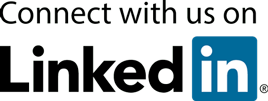
The number of Internet of Things (IoT) connected devices hovers around 17 billion, and that figure is expected to exceed 30 billion by 2030. These seemingly innocuous mechanisms function as unseen eyes and ears that perform functions such as real-time data collection and analysis.
They deliver quick, keen insights and identify patterns that might otherwise take human beings countless hours to recognize. Efficiency and cost-effectiveness made them veritable darlings in building management systems (BMS). However, their role has become so prominent that operations managers need to set up remote IoT device management software to truly maximize their benefits.
Understanding IoT Device Management
With so many diverse IoT devices working in a given facility, it’s important to be able to access all of their data in concert. Many of these products are connected through Wi-Fi or Bluetooth. Professionals in charge of facility oversight are often tasked with tracking the immediate data they produce. Having ongoing access helps adjust HVAC units, take advanced measures to avert mechanical failures, and even lower energy consumption. Unless they are brought under the wing of a comprehensive BMS, the intelligence generated is rendered less than optimal. These are steps to IoT remote management software.
- Provisioning: Sometimes referred to as device onboarding, provisioning involves configuring the mechanism in such a way that it syncs with a BMS and a variety of applications.
- Authentication: Enrolling devices into a given system provides them with an identity that can be authenticated. This step is essential because it allows the data to be accepted throughout the ecosystem and used in a fast, effective fashion. Authentication forms a critical element of cybersecurity. The process helps protect against hackers using IoT devices as a backdoor to steal valuable digital assets.
- Registration: Each IoT device is assigned an individual identity that can be recognized by adaptive software. This step allows the BAS to authenticate and accept data.
- Configuration: The configuration facet of remote facility management goes deeper than simply aligning the product with a network. It also sets the table for cybersecurity protections and safely updating software. When smartly configured, each IoT device can be brought into by new and emerging BAS and leveraged remotely.
The physical deployment of many IoT devices too often limits facility managers. In some cases, operations personnel rely on in-house connectivity. But what is fascinating is that a significant percentage of complexes haven’t taken advantage of remote IoT device management software that would allow them to monitor and adapt while off-site. For all intents and purposes, industry leaders are short-changing their organizations by not integrating software that delivers building automation remote monitoring.
Industries that Benefit from Remote IoT Device Management Software
The use of IoT products has been adopted by wide-reaching industries. These once kitschy step counters and heart rate measuring tools are making a significant contribution to organizations. Along with museums, healthcare facilities, and manufacturing plants, these are operations that are growing increasingly reliant on IoT connectivity.
- Agritech: Drones and other wireless resources are helping farmers and ranchers maximize annual yields.
- Energy: The shift toward more sustainable energy resources fast-tracked the need for IoT. Solar, wind, and other eco-friendly solutions are natural fits for next-gen technology.
- Logistics: Freight transportation outfits have gone all-in on IoT tracking. Logistics firms can pinpoint where goods and materials are located in the supply chain and make accurate estimates about deliveries.
While IoT devices are shaping corporate practices today and into the future, business professionals need a way to pull all the data together remotely. That notion holds particularly true when you consider operations leaders are running multiple sites.
ODIN IoT Remote Management Software Delivers Results
ODIN is a proven IoT remote management software that brings the data from building devices together under one umbrella. It helps manage everything from climate control to physical security. The cloud-based app allows users to establish ongoing settings, make one-time changes, and track energy consumption. If you are responsible for multi-site operations solutions, ODIN software can close the information and remote connectivity gaps. If you would like to learn more about ODIN, contact us today.






